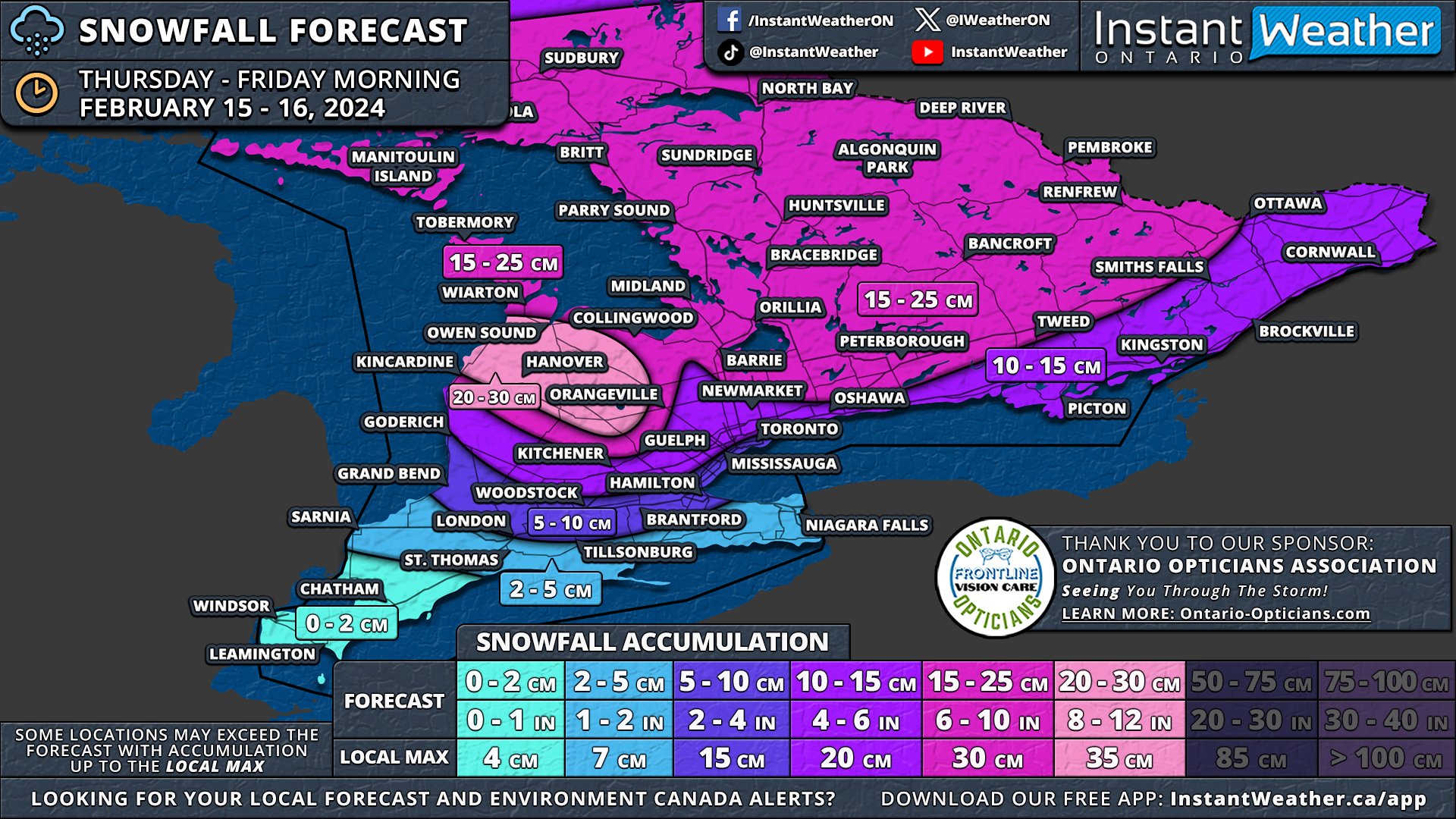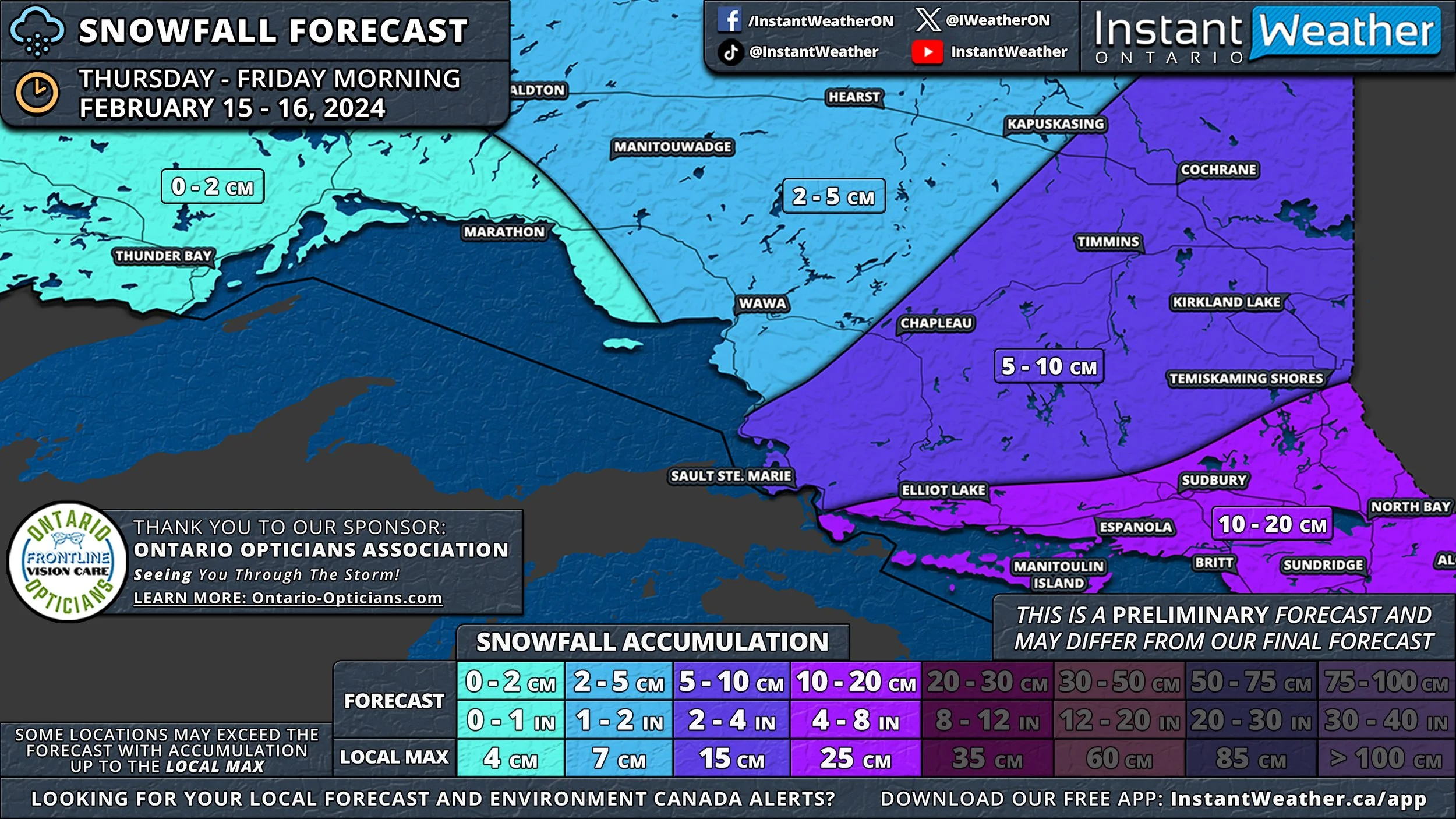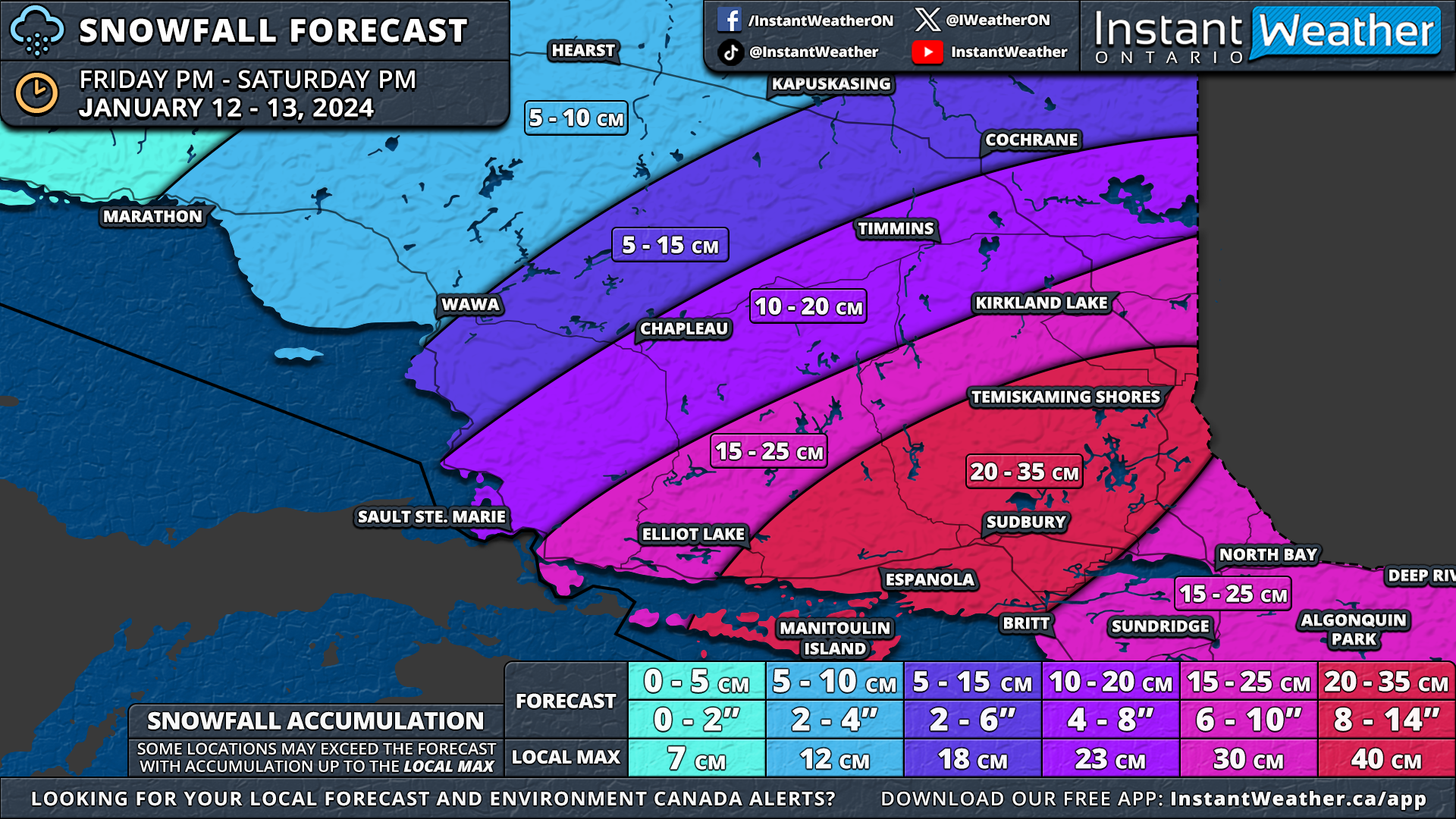Late Friday Wind Storm to Give Way to a Snowy Start to the Weekend in Parts of Ontario With Up to 10cm of Snow
/The weather across Southern Ontario has been largely characterized by spring-like conditions, with temperatures soaring into the 20s and the season’s first widespread severe weather event occurring on Tuesday. This pattern continued into Thursday and Friday with heavy rainfall, but a change is on the horizon for the weekend.
Persistent rain across Southern and Northern Ontario on Friday is expected to transition to snow overnight into Saturday morning. For most areas, the snow should melt upon contact, with limited accumulation. However, higher elevations around Georgian Bay and into Northeastern Ontario could see snow accumulations of 5-10cm by Saturday afternoon.
Before the snow arrives, strong wind gusts are anticipated to develop by Friday afternoon, continuing overnight into Saturday morning.
The strongest gusts, possibly exceeding 90 km/h, are expected along the Lake Huron shoreline and the southeastern shoreline of Georgian Bay.
The hardest hit regions include Kincardine, Goderich, Grand Bend, and Collingwood which could experience wind strong enough to potentially cause damage, including power outages.
In Southwestern Ontario and the Golden Horseshoe, wind gusts are predicted to range from 70 to 90 km/h. Eastern Ontario will see less impact, with wind gusts expected to stay below 70 km/h. The wind is expected to subside by sunrise on Saturday.
Northeastern Ontario will also experience strong gusts from Friday afternoon into the evening, with the areas directly north of Georgian Bay like Elliot Lake, Manitoulin Island, and Sudbury seeing the strongest gusts, approaching 80-90 km/h.
Widespread gusts of 70-80 km/h are expected in the rest of Northeastern Ontario, with lower gusts further north and west.
As colder air sweeps into the region overnight, temperatures across Central Ontario and the Dundalk Highlands are likely to hover around the freezing mark into Saturday morning. This will cause the existing rain to transition into wet snow or flurries starting Friday evening.
With temperatures near freezing and recent rainfall, it’s questionable if the snow will stick or accumulate. The best chance for accumulation is in higher elevations such as Shelburne, Orangeville, and the Blue Mountains, where up to 5-10cm of snow could accumulate by Saturday morning.
Surrounding areas extending into Central Ontario, including Barrie, Orillia, Muskoka, and the Kawartha Lakes, might see minor accumulations of 2 to 5cm. This will vary based on local conditions, which could impact the snow's ability to accumulate. Regardless, the area is likely to experience sloppy conditions and icy roads as near-freezing temperatures cause existing rain on roads to freeze and create black ice.
The rest of Southern Ontario will see less than 2cm of snow or no snow at all, as will be the case in Deep Southwestern Ontario, the Golden Horseshoe, and Eastern Ontario.
Colder temperatures in parts of Northeastern Ontario will allow for better snow accumulation, with areas like Timmins and Cochrane expecting up to 10cm of snow. The rest of Northeastern Ontario, except for regions north of the Georgian Bay shoreline, could see between 5-10cm of snow by Saturday afternoon. Less than 5cm is expected near the Georgian Bay shoreline due to warmer temperatures.
Snowfall is expected to cease across all parts of Ontario by early Saturday afternoon. The weekend will remain chilly for most areas, with temperatures stuck in the single digits on Saturday and Sunday, except in Deep Southwestern Ontario.
Windsor and Chatham may experience a pocket of warmer air, especially on Sunday, with temperatures potentially reaching the 20s and a risk of thunderstorms. The rest of Southern Ontario will see daytime highs in the mid to upper single digits on Sunday.















































































